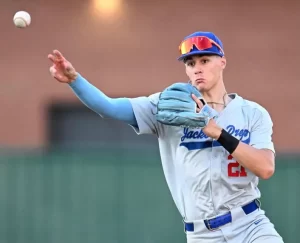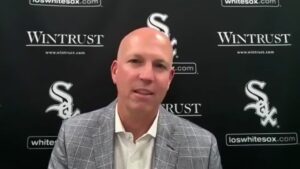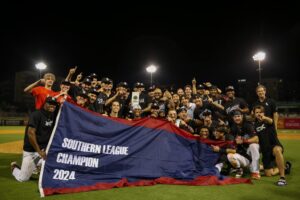2011 Draft Preview: Pitchers
It’s always difficult to try and predict which players are going to go
where in the draft, even in the first few picks, so when your team
doesn’t pick until #47, as the Sox do this year, predicting who they
will take is more or less impossible. I will however be looking at a few
of the plausible names that the Sox could be interested in, based on
rumors and past drafting tendencies. I’ll be focusing on college
pitching primarily, but also a few toolsy hitters who shouldn’t cost a
fortune.
Matt Andriese, RHP, UC Riverside:
Low 90’s fastball. Holds velocity deep into games. Power breaking ball with plus potential and average change. Decent command.
Andrew Chafin, LHP, Kent State:
Fastball sits low-90’s,
touching 95, wipeout slider, improving change. Missed 2010 season to
Tommy John surgery. Chafin sits atop my realistic wish list. Good potential as a mid to front end of rotation starter.
Adam Conley, LHP, Washington State:
Contact pitcher with heavy, sinking fastball and plus change. Breaking ball needs a lot of work.
Andrew Gagnon, RHP, Long Beach State:
Fastball can reach 94, but sits low-90’s. Throws a curve and slider,
which both need work, but show promise. Also has a fringe-average
change.
Grayson Garvin, LHP, Vanderbilt:
Fastball sits low-90’s, touching 95 at times, solid change, below
average breaking pitch. Limited upside due to lack of a put-away pitch. I
hope the Sox stay away.
Sean Gilmartin, LHP, Florida State:
Considered one of the
“safer” arms in the class. Fastball sits around 90, plus to plus-plus
change, average slider. Good command and pitchability.
Eric Johnson, RHP, Cal:
Fastball sits low-90’s topping out at 95. Mixes it with a knockout slider and inconsistent curve/change, though the change flashes good potential.
Charlie Lowell, LHP, Wichita State:
Fastball sits low-90’s but has touched mid-90’s. Hard slider and usable change give a solid three-pitch mix. Command needs work.
Anthony Meo, RHP, Coastal Carolina:
Plus fastball-breaking
ball combo but undeveloped change mean his future will probably be in
relief, though will likely be given a chance to start.
Josh Osich, LHP, Oregon State:
Very good fastball sits 93-94,
touching the upper 90’s. Good change and command. Developing breaking
pitch. Another who missed 2010 to TJ surgery.
Noe Ramirez, RHP, Cal State Fullerton:
Fastball sits 88-91, topping out at 93. Potential plus-plus change and average slider. Plus command and makeup. Great track record.
Chris Reed, LHP, Stanford:
Reed has been the popular name in “expert” mock drafts. He relieved in Stanford but is viewed as a potential starter due to solid three-pitch mix. Fastball sits low-90’s and has touched 96, with power slider and above average change.
Burch Smith, RHP, Oklahoma:
Good velocity on the fastball which can easily hit the mid-90’s. Curve, change and slider give him four potentially usable pitches, but all need work, as does his command.
Kyle Winkler, RHP, TCU:
Slightly undersized at 5-11, 205, but has a solid three-pitch mix of fastball, slider, change. Left his last start early with apparent elbow pain which could affect his draft status.
Tony Zych, RHP, Louisville:
Reliever with mid 90’s fastball that can touch 99. Slider needs work.






